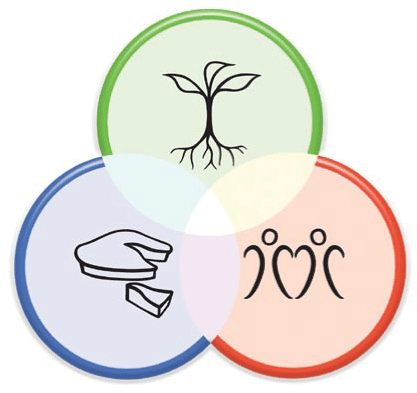I hear it all the time…..”I have too many zucchinis / apples / plums / tomatoes…. I don’t want to waste them but what am I going to do? I don’t have time / energy / space / to make jam / bottle things / make preserves / visit my neighbour and give them away!”
Growing food is step 1 of sustainable living and dare I say it but most people never graduate past it because of the stress it can produce. They want a job AND children AND acreage in the countryside AND a food garden AND chooks…… etc.
So, if this is you, how can you remove some of the stress of over-abundance in your food garden? Bearing in mind that this is stage 1 of sustainable living and we are not asking you (yet) to change how you do things, we are just trying to stop you giving up growing food and make you more relaxed so maybe you will think about moving to stage 2.
My suggestion is to take what you need and let nature have the rest. Giving things back to the earth is simply recycling. Putting 10 zucchinis in the compost is wonderful. I recently tipped a large bag of plums that someone had given me, into the compost. I could have gone through it and picked out the good ones (most had gone soggy and some were all mouldy by then) but I thought “No, I am really too busy to deal with this, this week” and in they went. In a few months they, along with the rest of the compost, will be returned to the garden. Problem solved, stress released, move on.

In the photo above, my garden became overgrown with 2 massive, self-sown pumpkin vines and, at the time, I could not store them all so I swapped 98kgs of random pumpkins for other produce at a local organic grocer. (7 years later I still love this shirt!).
In this photo, I am taking my over abundance of greens to the same shop to swap for other things. (7 years later, that is still my favourite gardening shirt!!).
I have a wonderful, weeping Lady in the Snow apple tree with the most delicious apples you can imagine. Now it is laden and many are falling. I keep looking at it from the back door and remembering the year I did not waste a single apple. My chooks roam under that tree (keeping it free of coddlin moth) so they peck at them on and off but there are too many even for 5 chooks. Today it is raining (so I won’t be gardening) and I will collect a basketful and juice them for the freezer (my freezer loves apple juice ). I will take some to the friends at the community garden. I will pick one every day when I am gardening and stand there and enjoy it. I hope to wrap lots in paper and save them for later. The native honey eater birds love them too. Still there will be many dozens “wasted” but they will all go back into the soil and feed the tree for next year. That is the cycle of life and how it should be. You could rake them up and put them in the compost if you like. Problem solved, stress released, move on.
Think cycles. Then there is no such thing as wasted food from the garden (or wasted anything, really). The consumer is encouraged to think in lines: buy new, use, discard waste then buy again, etc. Nature revolves in cycles such as seasons and the recycling of living matter. By buying something from a friend or secondhand shop (or tip-shop or gum tree if you are in Australia) you are moving to stage 2, where you are re-using something perfectly good that someone else has thrown out because they are still thinking in lines and they want the latest model or fashion.
After my secondhand microwave stops working, I will use it as a seed storage cupboard out on my porch (with the parsley I wrote about on facebook today!). Then I will find another second hand one in perfect working order and, because it will only cost about $20, I won’t be stressed about it when it stops working after a few years, or if it is the best one! This is permaculture principles 10 (use and value diversity) and 12 (creatively use and respond to change). See below.
Permaculture principles in this post:
![]() 3. obtain a yield
3. obtain a yield
![]() 5. use and value renewable resources and services
5. use and value renewable resources and services
![]() 6. Produce no waste
6. Produce no waste
![]()
10. Use and value diversity
![]()
12.Creatively use and respond to change
Permaculture ethics in this post:

Earth care, people care, fair share

2 comments:
Oh thanks Kate - I needed to hear that. My garden is sometimes overwhelming and I feel so guilty (I do use the phrase -"I let them go to seed deliberately" quite a lot!)
I will reboot my brain and give back to the garden happily from now on.
Cheers
Jan
Kate
I love this!
Luckily for me, my garden hasn't produced too much this year and I've been able to every bit.
I've been meaning to get a composter going and this is definitely inspiring me to get into gear. I also love your comments on how the food replenished the ground for the new year.
Thanks for the good read.
Post a Comment